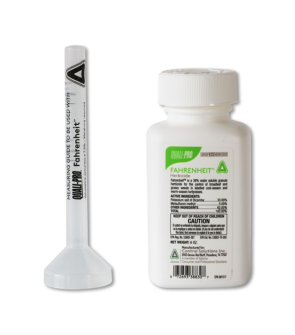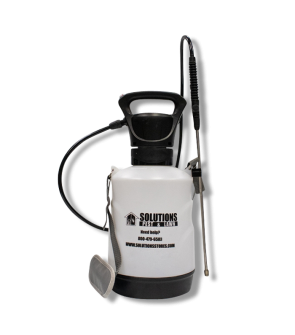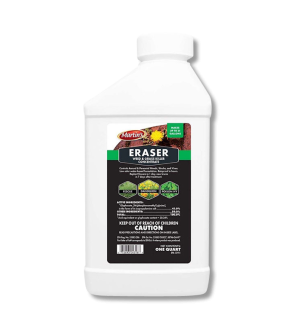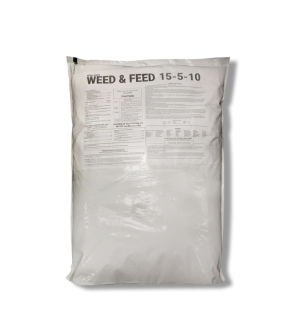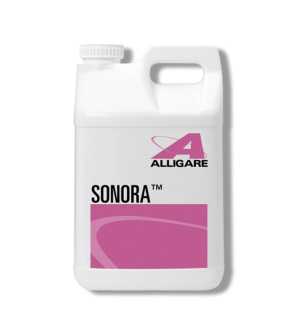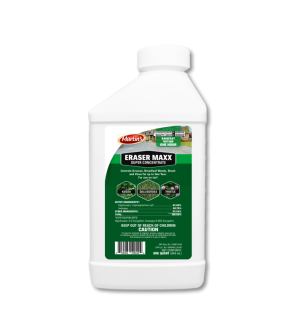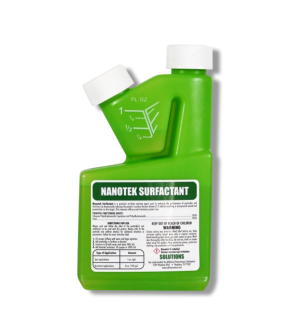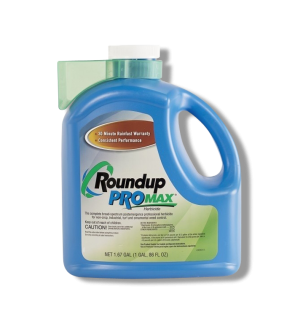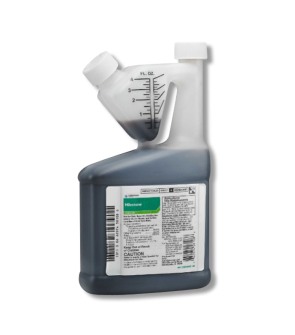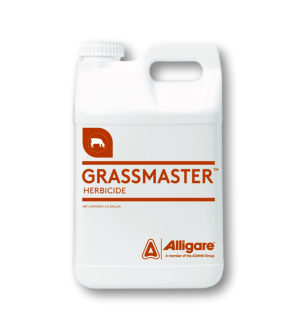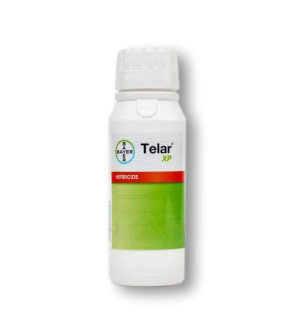Gain access to personalized product screening, the best pricing, rewards, and more!
Most Effective Products
Yellow Starthistle Control: How to Get Rid of Yellow Starthistles
This page is a general DIY guide for controlling yellow starthistles. Using the suggested products and methods, you can control yellow starthistles. Follow this DIY article and use the recommended products, and we guarantee 100% control of yellow starthistles.
Yellow starthistle might sound harmless with its sunny name, but this invasive weed is anything but friendly. Also known as golden starthistle, yellow cockspur, St. Barnaby's thistle, or just starthistle, this spiny plant has taken over various sites throughout the southeastern and western half of the United States.
It forms dense, thorny patches that crowd out native plants, reduce biodiversity, and steal water from surrounding vegetation, especially in dry areas. Its spiny stems make it nearly impossible for animals to graze, and it’s especially dangerous to horses, causing a fatal neurological disorder known as chewing disease if consumed in large amounts.
To make matters worse, yellow starthistle is incredibly hard to control as each plant produces thousands of seeds that can survive in the soil for years, making infestations long-lasting and costly to manage. Read on to learn how to kill and prevent yellow starthistles with the following professional tips and products.
Identification
Before proceeding with a treatment program, you must be certain you are dealing with a yellow starthistle infestation. Careless identification can lead to using the wrong treatment methods, which can be a waste of time and money. Below are the following characteristics to help you understand what yellow starthistle looks like.

- Yellow starthistles are invasive, winter annual broadleaf weeds that grows 2 to 3 feet tall, have a deep taproot, and a bushy, branched structure.
- In spring and summer, the plant bolts and sends up branched, winged stems that are gray-green to blue-green in color and covered with fine, woolly white hairs. The stem leaves are alternate, narrow, and sparsely lobed or unlobed, typically measuring 1/2 to 1 inch long.
- The flower heads are bright golden yellow, about 5/8 inch in diameter, and are surrounded by spiny, yellowish bracts. These spines, ranging from 3/8 to 3/4 inch in length, form a star-like ring below the flowers.
- Yellow starthistle produces two types of seeds: the inner seeds are white or light brown with small white bristles (pappi) that help in wind dispersal, while the outer seeds are dark brown and lack bristles.
Use the description and image above to help you properly identify yellow starthistles on your property. If unsure, contact us and send a photo of your weed through email or in person at one of our stores to help you identify the weed and suggest treatment options.
Inspection
Once you confirm that you are dealing with yellow starthistles, you can move on to inspection. During this phase, you will locate areas where yellow starthistles is thriving and observe the conditions that allow it to thrive. This information will help you know where to focus your herbicide application.
Where to Inspect
Yellow starthistle commonly grows in open areas with disturbed soil and access to sunlight.
Typical sites include roadsides, highways, railroads, rights-of-way, grasslands, overgrazed pastures, rangelands, abandoned agricultural fields, vacant lots, along fence lines, hay fields, woodlands, small grains, alfalfa fields, hillsides, edges of cropland, recreational areas, construction lots, and other disturbed areas.
What to Look For
Yellow starthistle is a winter annual plant, meaning it typically begins its growth cycle in the fall. After seeds germinate, usually in October or November, the plant develops a small, ground-level rosette of leaves.
During fall and winter, it stays low to the ground in this rosette stage, with leaves that are deeply lobed and resemble a dandelion’s.
In early spring (around March to April), the plant starts to grow upward, developing a thick, branching stem covered in fine hairs.
As the weather warms, usually by May or June, yellow starthistle rapidly grows taller, and by July and August, it produces its distinctive bright yellow flowers surrounded by sharp, stiff spines.
Flowering can continue into September, after which the plant dries out and turns brown, leaving behind sharp seed heads that persist into fall. Some seeds may also germinate in the spring, especially after a wet winter, but fall germination is more common.
Treatment
After identifying yellow starthistle and inspecting where it is most active in your yard, you can begin to treat your area. Wear the appropriate personal protective equipment (PPE) before handling or applying any product.
Several herbicides can effectively control yellow starthistle, especially when applied at the right growth stage. Post-emergent herbicides containing aminopyralid, clopyralid, picloram, glyphosate, dicamba, triclopyr, or 2,4-D often produce the best results.
Regardless of the product, timing is critical. Most herbicides work best when yellow starthistle is still in the rosette stage and before it begins to flower.
Step 1: Mix and Apply Herbicide

For spot applications in warm-seasoned turf, apply 0.2 oz. of Fahrenheit Herbicide per 1 gallon of water per 1,000 sq. ft.
To increase this herbicides effectiveness, we suggest mixing with a non-ionic surfactant like Nanotek Surfactant. Just add 1 oz. of Nanotek per 1 gallon of spray solution.
On the other hand, Eraser 41% Glyphosate is a powerful non-selective herbicide that works by killing the plant once sprayed. It's best used in areas where you don’t mind killing everything, such as along fence lines, driveways, or before reseeding a site with native grasses.
Keep in mind that non-selective herbicides like this will kill any vegetation the spray comes into contact with.
For this reason, we suggest mixing in a handheld sprayer labeled just for non-selective herbicides.
For either product used, you will need to mix with water in a handheld pump sprayer or backpack sprayer.
To use Eraser 41% Glyphosate as a spot treatment, mix 2 1/2 oz. of product with 1 gallon of water to treat 300 sq. ft.
Step 2: Reapply if Needed
When applied properly, affected weeds will begin to turn yellow and die.
Yellow starthistle is stubborn and may require a second application.
Fahrenheit Herbicide can be reapplied when 4 to 6 weeks have passed from the first application.
A second application with Eraser 41% Glyphosate can be done when 4 weeks have passed from the first treatment.
Prevention
Once yellow starthistles have been eliminated from your property, you will need to implement preventative measures to ensure that this weed does not return.
- Maintaining healthy grasses and ground cover helps outcompete yellow starthistle, so overseeding bare or disturbed areas with competitive grasses or native plants is beneficial. Avoid overgrazing, which creates bare patches that invite invasion.
- Cleaning equipment and animals after moving through infested areas helps prevent the spread of seeds.
- Mowing and tillage can help prevent yellow starthistle. Mowing early, before the plants flower and produce seeds, stops the weed from spreading, but may need to be repeated since the plant can regrow. Tillage disrupts young seedlings by turning the soil, preventing them from establishing, but it should be followed by reseeding desirable plants to outcompete weeds.
- Fertilizing helps prevent yellow starthistle by promoting healthy, dense grass growth that competes with and crowds out the weed. Strong, well-fertilized plants reduce the open space and resources yellow starthistle needs to establish and spread. For this reason, we suggest Solutions 15-5-10 Weed & Feed Fertilizer with Trimec. This product combines a balanced fertilizer with Trimec, a herbicide mix that targets weeds such as yellow starthistle while promoting the growth of desirable grasses. You will need a push spreader or a handheld spreader to make applications. Mow your lawn to its normal height 1 to 2 days before application. Apply 3.2 to 4 pounds of Solutions 15-5-10 Weed & Feed Fertilizer with Trimec per 1,000 sq. ft. Wait 1 to 2 days after application before watering in the granules with water.
Key Takeaways
What is Yellow Starthistle
- Yellow starthistle is a tough, invasive broadleaf weed that thrives in dry, disturbed soils. It’s a noxious weed known for crowding out native plants and reducing forage quality for livestock.
How to Get Rid of Yellow Starthistles
- To get rid of yellow starthistle, you can use Fahrenheit Herbicide, which can be used in most warm-season grasses. It's best to mix with a non-ionic surfactant like Nanotek for better results. For tougher or non-selective control, use Eraser 41% Glyphosate mixed, but be careful as it will kill any plants it contacts.
Preventing Yellow Starthistles
- To prevent yellow starthistle, maintain healthy grasses by overseeding bare areas, avoiding overgrazing, and fertilizing with Solutions 15-5-10 Weed & Feed Fertilizer with Trimec to promote dense growth that outcompetes the weed.










